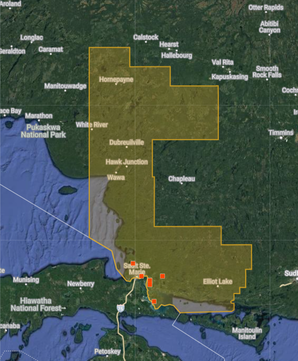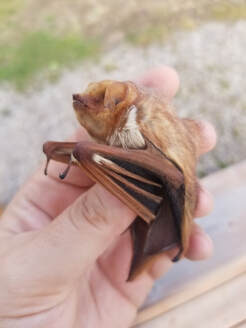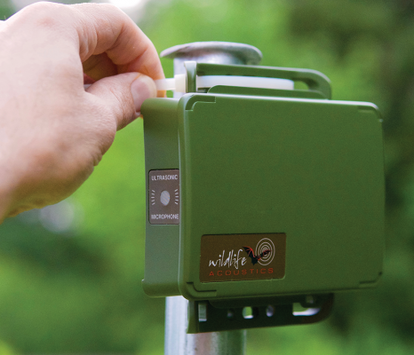TKC Bat Monitoring and Education Program
Become a community scientist and contribute to our local bat knowledge!
Bats in Ontario
There are 8 species of bats found in Ontario.
|
Migratory Bats
Three bat species migrate south for the winter months, spending time in the southern US, Caribbean and Mexico.
|
Non-Migratory or Cave Dwelling Bats
Five bat species move to hibernation roosts or hibernacula in the winter months, these are often located in abandoned mines or natural caves.
|
A Species at Risk
Four of the eight bat species in Ontario are listed as Endangered by the Committee on the Status of Endangered Wildlife in Canada (COSEWIC) and the Committee on the Status of Species at Risk in Ontario (COSSARO).
These at risk bat species are all non-migratory/cave dwelling bats and have suffered declines primarily due to white nose syndrome.
Little Brown Myotis (Myotis lucifugus)
Northern long-eared Myotis (Myotis septentrionalis)
Tri-colored Bat (Perimyotis subflavus)
Eastern Small-footed Myotis (Myotis leibii)
Want to learn more about Ontario's bats? Click here.
Four of the eight bat species in Ontario are listed as Endangered by the Committee on the Status of Endangered Wildlife in Canada (COSEWIC) and the Committee on the Status of Species at Risk in Ontario (COSSARO).
These at risk bat species are all non-migratory/cave dwelling bats and have suffered declines primarily due to white nose syndrome.
Little Brown Myotis (Myotis lucifugus)
Northern long-eared Myotis (Myotis septentrionalis)
Tri-colored Bat (Perimyotis subflavus)
Eastern Small-footed Myotis (Myotis leibii)
Want to learn more about Ontario's bats? Click here.
Bats in Algoma
|
While we know that bats live here, very little is known about which species of bats reside in the Algoma region and how their populations are doing.
There are only 10 observations of bats on the citizen science platform iNaturalist for the entire Algoma District! One of our goals is to increase the number of bat observations submitted to iNaturalist so that we have a better idea of which bat species are inhabiting the area. Join our Project Bats of the Algoma District on iNaturalist. These observations will in turn be shared with other bat monitoring platforms such as Neighbourhood Batwatch. |
TKC's Bat Monitoring Program
How do we monitor for bats?
Beginning in the summer of 2022, The Kensington Conservancy will be surveying for bats on our nature preserves using automated bat detection devices. These devices remotely monitor bat activity, by detecting high frequency ultrasonic vocalizations (echolocation) from nearby bats.
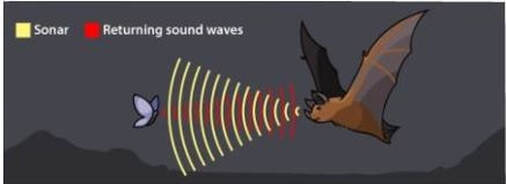
Echolocation
Echolocation is a strategy used by bats to navigate and characterize elements of their environment. In order to echolocate, most bats produce very high frequency sounds (i.e. ultrasonic) by contracting their larynx (voice box). By producing these sound waves and listening to the echoes that result, bats can move and hunt in the dark.
Echolocation is a strategy used by bats to navigate and characterize elements of their environment. In order to echolocate, most bats produce very high frequency sounds (i.e. ultrasonic) by contracting their larynx (voice box). By producing these sound waves and listening to the echoes that result, bats can move and hunt in the dark.
Each individual bat species has a unique vocalization (or echolocation frequency), characterized by duration, frequency, and shape, that can be identified using specialized computer software and visualized as a sonogram (pictured below).
The Kensington Conservancy will be deploying remote recording devices that will record bat vocalizations over a long period of time (eg. Song meter mini bat ultrasonic recorder). Data will be downloaded at the end of the season (Sept/Oct) and analyzed with specialized software to identify the bat species. (Kaleidoscope Pro Bat Auto-ID)
Learn more.
Learn more.
The Kensington Conservancy will also be motoring bat activity using hand-held bat recording devices that can pub into a cell phone or tablet. These devices record bat vocalizations as they fly overhead and include software that identifies the bat species in real time. Learn more.
Providing Habitat for Bats
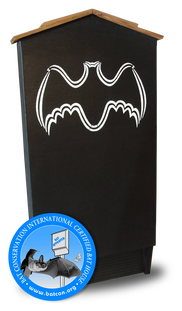
The Kensington Conservancy will be installing four large bat houses on our preserves, each with a 300 bat capacity. These bat houses will provide a safe, long-lasting summer home for local bats.
The bat houses were generously donated to us from the Sault Naturalists, who received them from the Goulais Wind Farm.
The bat houses are manufactured by Canadian Bat Houses.
The bat houses were generously donated to us from the Sault Naturalists, who received them from the Goulais Wind Farm.
The bat houses are manufactured by Canadian Bat Houses.
How To Get Involved |
Thank you to the following for making this program possible:
|

